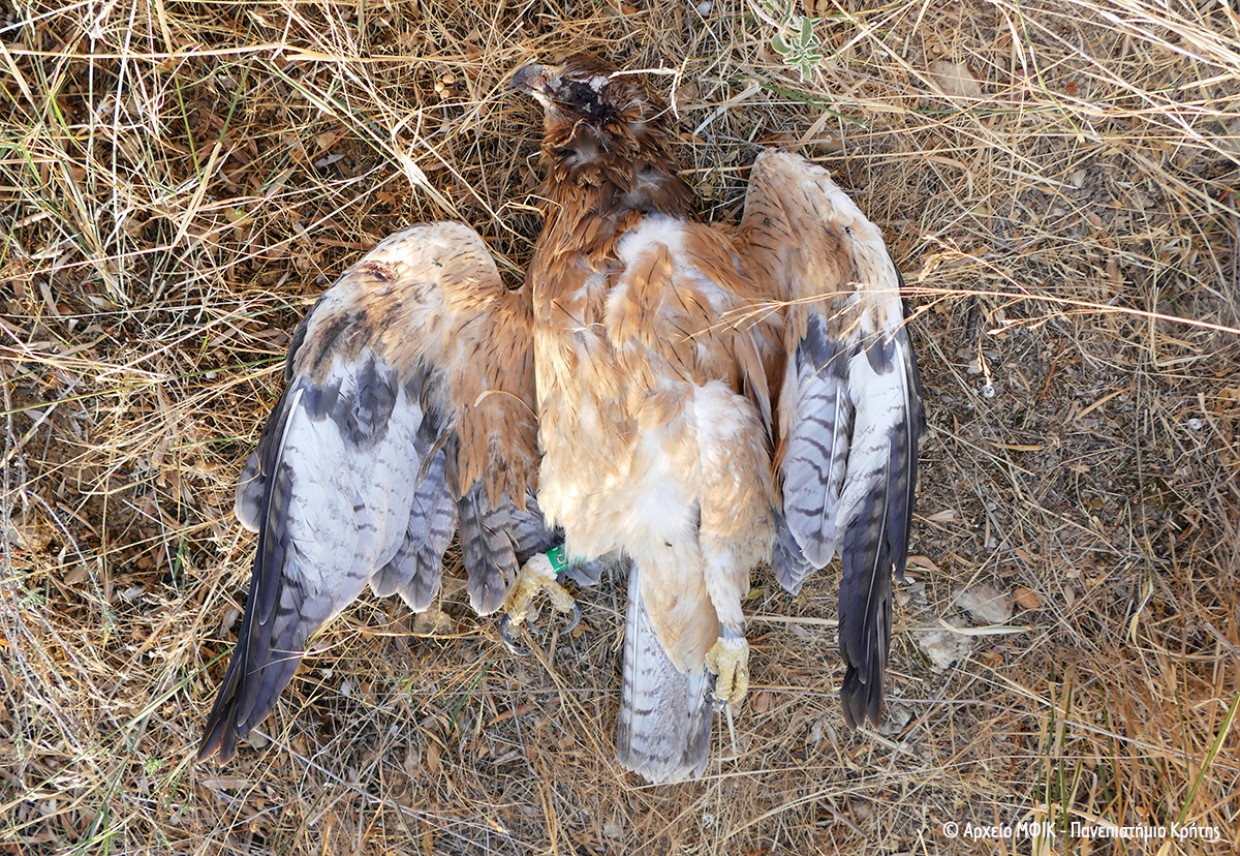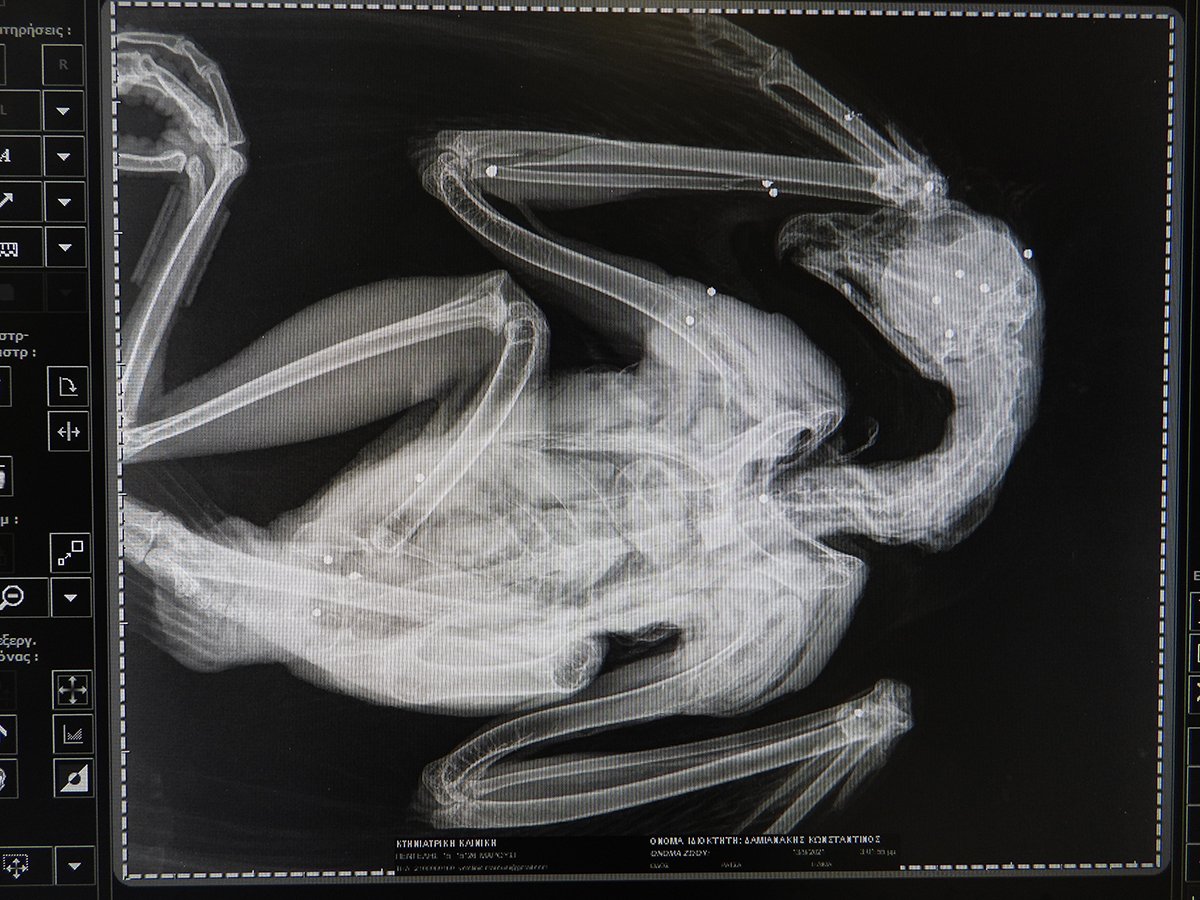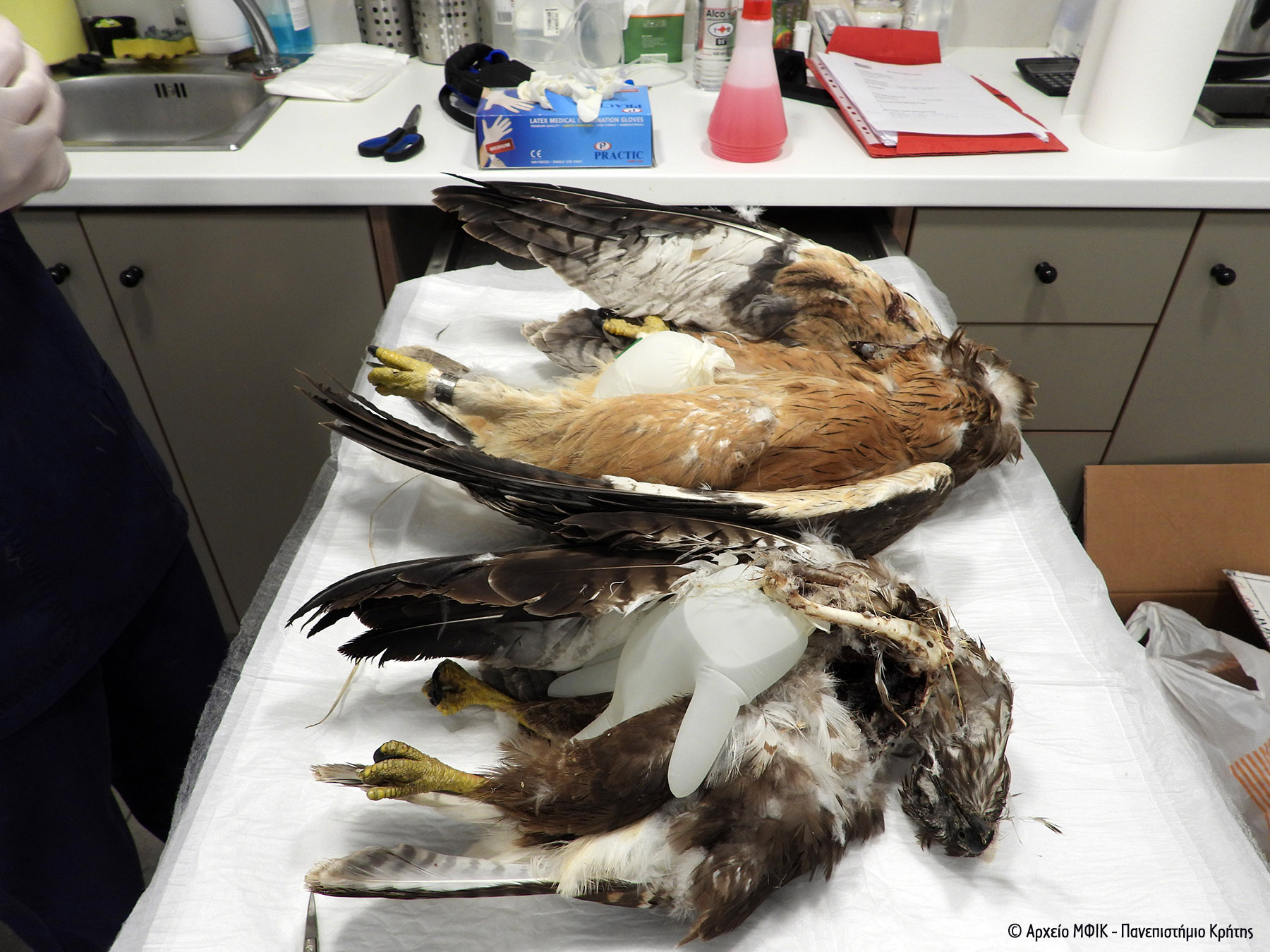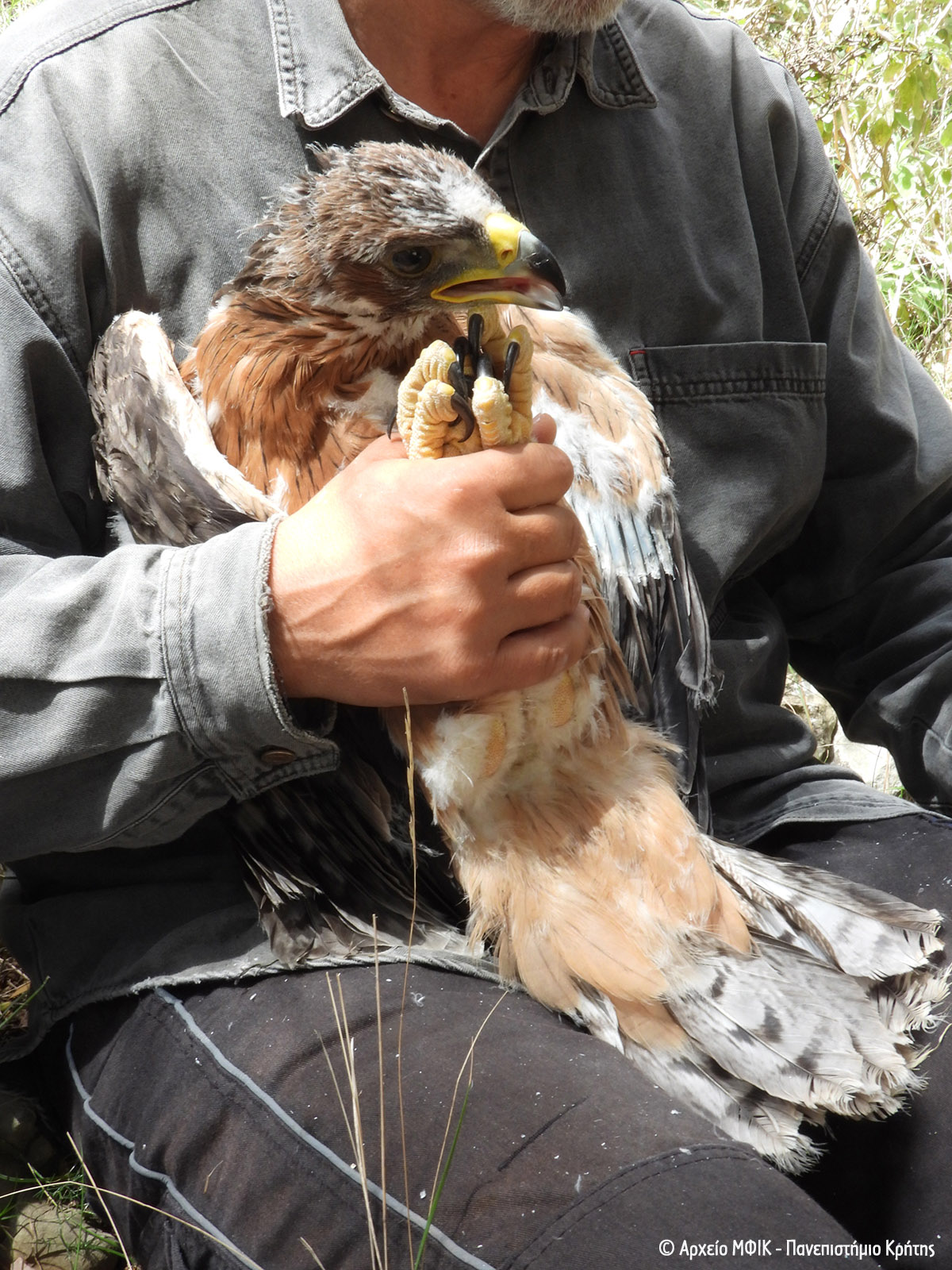New environmental crime in Crete: Young Bonelli's Eagle shot dead

More than 25 years of environmental projects, several European funds and public awareness actions throughout Crete were not enough to go, in the year 2021, as a society one step ahead and some audacious people should not shoot eagles.
While the recorded reduction in wildlife deaths on the island from the shooting shows that something has changed for the better, the recent incident has shown that there will always be people who consider nature their property and that it is just a moving target.
"Lambros", was a young Bonelli's Eagle who was born in March 2021 on Green Gorge, by a well-known breeding couple of the island and was tagged with a satellite transmitter in April 2021. After wandering for four months in search of food and a territory, a few days ago (10/9/2021) "Lambros" ended up dead from a shooting in a rural area south of the Basilica region of the Municipality of Gortyna in Crete.
As it turned out from necropsy and radiological examinations that followed, the protected and endangered bird of prey was killed by a shotgun from a relatively close distance.

The location of the eagle was made possible thanks to its satellite transmitter which emitted a signal of its movement at regular intervals. His presence and movement on the specific day (10/09/2021) in the specific area, raised the suspicions of the LIFE Bonelli EastMed Project’s team and led the GIS Officer to the exact spot where the bird ended up.
Τhe fact that next to the young Bonelli's Eagle was found dead and a Honey Buzzard, in combination with the last data from the satellite transmitter and the results of the X-rays suggest that the animal was shot just at the time he had captured the young Honey Buzzard and was feeding. Also the perpetrator took care to hide the corpse of the eagle away from the place where he left his last breath.

This case is obviously another brazen crime against wildlife recorded in the history of Cretan society. A society that does not hesitate to kill one of our emblematic roommates on the island, whom in other cases it praises with local songs and other forms of folk art.
This incident has already been reported the Directorate of Forests of Heraklion in charge of wildlife issues and the Prosecutor, by order of which a preliminary examination is carried out, in order to collect all possible useful data (type of missile, satellite spots and mobile data) that will lead to the arrest of the perpetrator and the indictment of environmental crime.
In addition, the LIFE Bonelli EastMed Project for the protection of the Bonelli's Eagle will, as appropriate, formally inform the European Union in order to initiate relevant procedures, as the incident concerns a European funded Project [2] and Bonelli's Eagle is a strictly protected species internationally.
Killing birds of prey is a CRIME!
We invite anyone who has information that may help to identify the perpetrator to contact at the Miron Forestry, Crete at tel. +30 28920 23028.
The protection of the nature of Crete and the preservation of the natural heritage of the island is in our hands!

[1] The Bonelli's Eagle (Aquila fasciata) is a medium-sized to large-sized bird of prey and a resident species in the Mediterranean. Greece hosts 10% of the European population of the species. It used to be very common in the Greek countryside, but nowadays it is found mainly in the Aegean islands, Crete and the southeastern Peloponnese.
Crete in the 90's was host 8-10 couples, while today this number has risen to about 15 couples.
He remains loyal to its territory, a stage that precedes a period of nomadic wandering during the first two years of its life. In Greece Bonelli’s Eagle prefers isolated areas with intense anaglyph in generally dry climates, where there is an abundance of prey he prefers, ie mammals and birds up to the size of a hare and a gull, while supplementing his diet with lizards and snakes. In Crete he is also known as “Philadelphus”, from its habit of hunting with its couple.
It is a protected species (Birds Directive 2009/147 / EC ANNEX I, Berne Convention, ANNEX II, Bonn Convention ANNEX II) and in the Red Book of Endangered Animals of Greece it is recorded as an endangered species.
[2] The ringing, the tagging with the satellite transmitter and then the monitoring of the specific bird, as well as other species of birds of prey from different areas of Crete, was carried out by the University of Crete - Natural History Museum of Crete (Figure 4), in the framework of the LIFE Bonelli EastMed Project (Conservation & Management of the Bonelli's Eagle population in east Mediterranean -LIFE17 NAT / GR / 000514). The project is implemented during the period 2018 - 2023 in 22 areas of the NATURA 2000 Network (in Crete, Attica, Peloponnese, Cyclades and Dodecanese), in collaboration with the Ministry of Environment & Energy, the Hellenic Ornithological Society/BirdLife Greece, the Game and Fauna Service (Game Fund) of Cyprus, the Cyprus Department of Forests and the NCC Environmental Studies Ltd. The actions of the Project are implemented with the contribution of the LIFE financial instrument of the European Union and the co-financing of the Green Fund and the AG Leventis Foundation.













